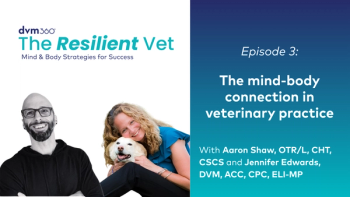
Helter shelter: dealing with insufficient rescue facilities
One animal shelter's unorganized, inadequate care proves frustrating.
If you're a veterinarian interested in helping your local shelter (see "The Shelter Dilemma" in the April 2008 issue or in the related links below), your help may not be as welcome as you'd think. Shelter work can be a rewarding experience, but it can also be riddled with stress and frustration.
Dr. Brad Crauer and his dog Sabine relaxing at Rattlesnake Ridge, Wash.
I led a group of volunteer veterinarians to provide relief at a local shelter in response to negative reports conducted by the University of California-Davis Koret Shelter Medicine Program and no-kill-shelter advocate Nathan Winograd. Our role was to provide support and help implement change as outlined by the reports.
When we arrived for our first day on the job, the county's desire for improvement was superficial at best. There were no isolation procedures in place and only limited documentation of medical treatments. Routine standards of care— such as vaccinating animals upon arrival, testing for feline leukemia, confirming gender, and even properly identifying the animals—weren't consistent or accurate. Care ranged from barely adequate to just plain neglectful.
We continued to observe many disheartening things. Dead kittens in their cages were dismissed as commonplace. Dogs exposed to parvovirus were moved from run to run, spreading the risk of disease. Diseased animals suspiciously disappeared prior to announced inspections. We evacuated the sickest animals from the shelter so we could develop and implement isolation protocols, removing more than 60 animals in a four-week period. But the county made no effort to improve the conditions, instead treating our hospitals as extensions of the shelter while failing to address the problems that made our hospitals necessary.
We've continued to provide a weekly supportive presence in the shelter, but the seasonal increase in population has only magnified the inadequacies. The shelter's leadership has implied that because we're private practitioners, we can't appreciate the shelter's circumstances. This is a convenient argument, but we have veterinarians in our group who did extensive post-Katrina rescue work in New Orleans. Others have missionary experience in Central America and Africa. We've seen better care provided with far fewer resources. The excuses are empty.
Many of the people we've met at the shelter do their best for the animals and want to move forward. Unfortunately, the presence of individuals hostile to us and other outside sources will continue to limit what we can do. This has been an exhausting undertaking. Individual animals have benefited from our presence, but we've seen no significant change. How much longer will these animals suffer?
Dr. Brad Crauer is the medical director of VCA Redmond Animal Hospital in Redmond, Wash. To share your comments, visit the
Newsletter
From exam room tips to practice management insights, get trusted veterinary news delivered straight to your inbox—subscribe to dvm360.






